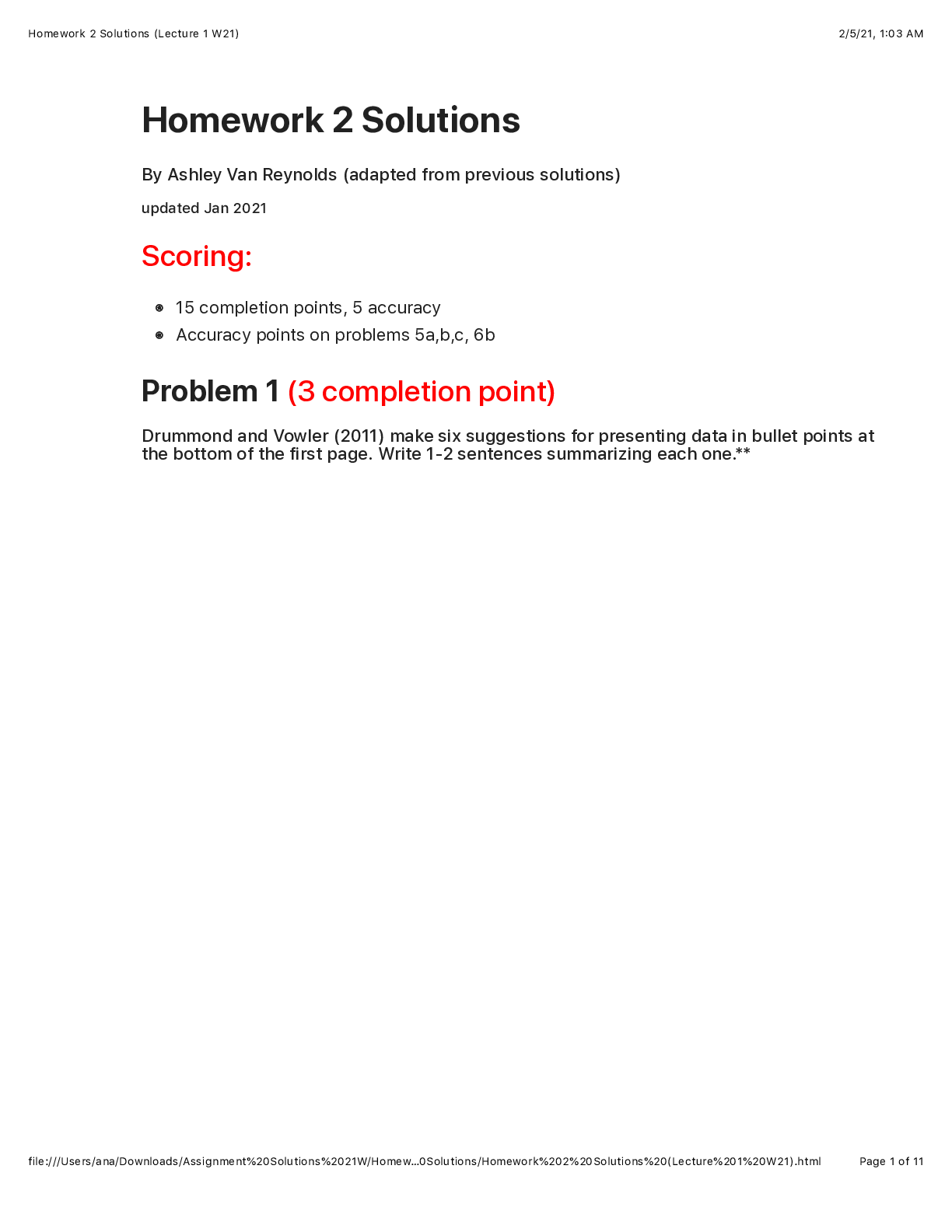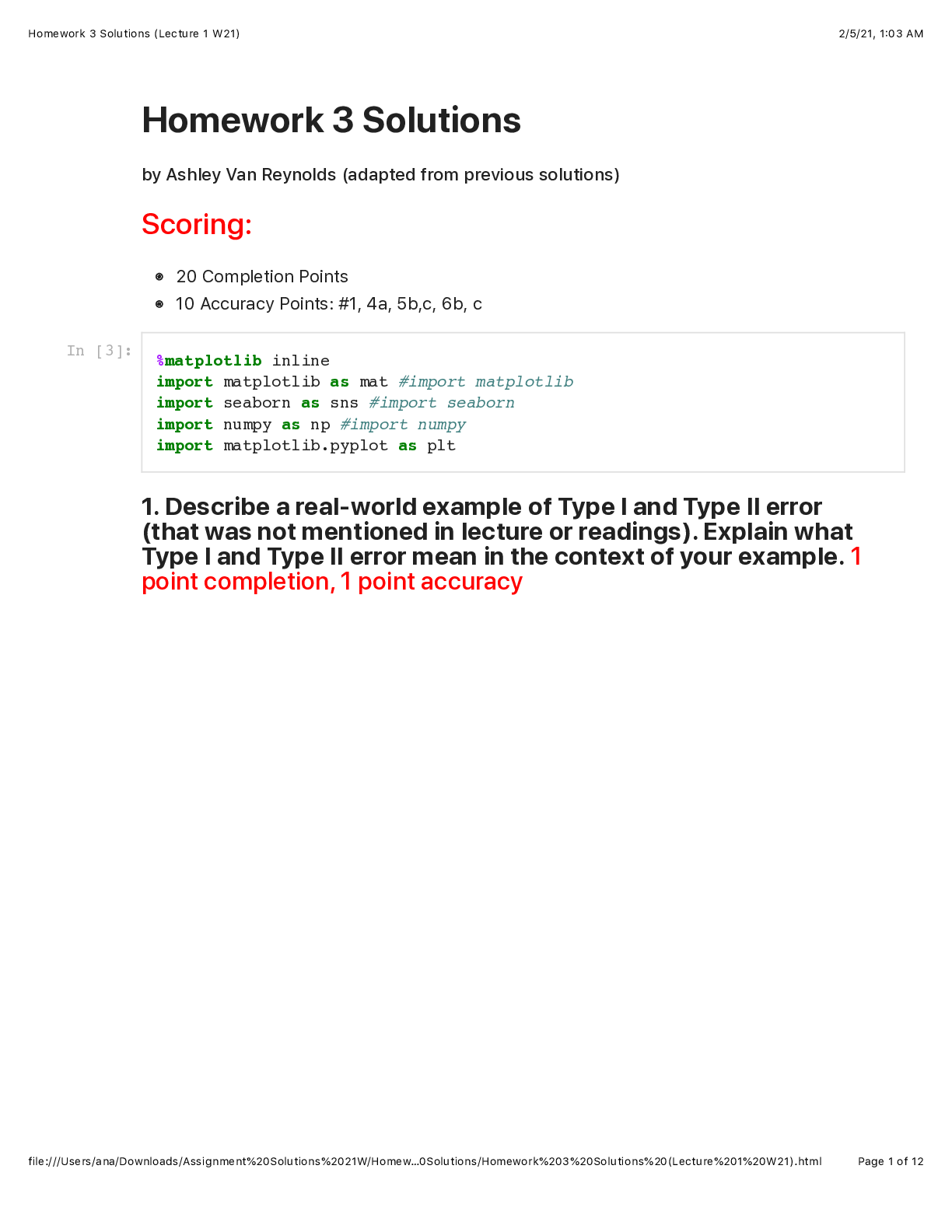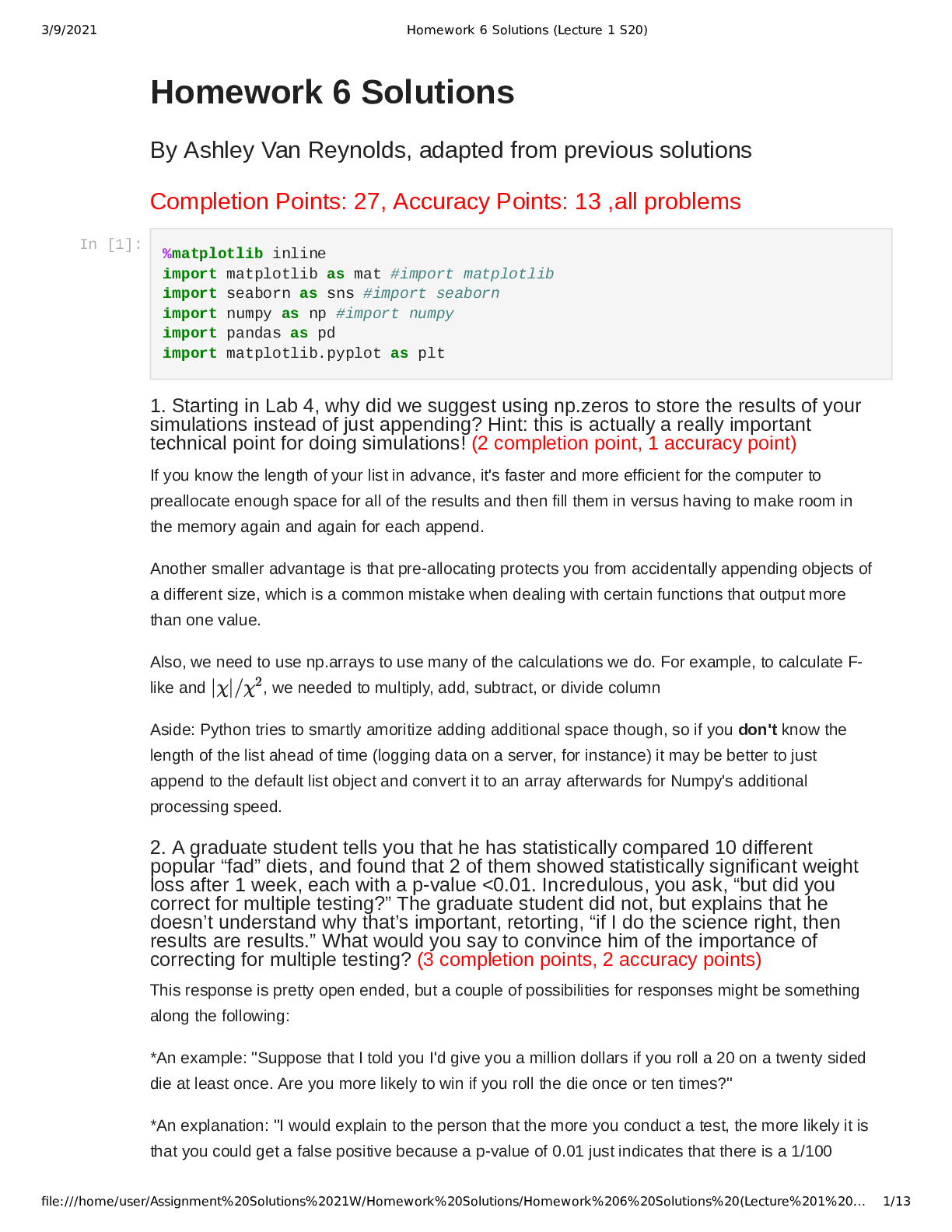Biological Psychology > QUESTIONS & ANSWERS > LS 40 (Life Science) Homework 5 Solutions (Lecture 1 W21)updated in Jan 2021 (All)
LS 40 (Life Science) Homework 5 Solutions (Lecture 1 W21)updated in Jan 2021
Document Content and Description Below
Homework 5 Solutions By Xinyue Liu (Adapted from Previous Solutions) 1. Why might researchers want to use paired design and analysis rather than just independent samples? (2 points completion only)... Using paired design allows you to greatly reduce within-group variation, by controlling for individual effects on treatment outcomes/effectiveness. For example, one individual might inherently have a better immune system than others (which would contribute to within-group variation in an independent sample), but a similar reduction in infection duration compared to other subjects (e.g., difference or ratio of descriptive parameter) that wouldn't contribute to across-group variation. Thus, like ANOVA, paired design and analysis partitions across-group and within-group variation and increases the likelihood of detecting a significant effect (which we'll call power soon). This means researchers are more likely to calculate a p-value less than their pre-selected alpha if the effect actually exists. 2. We always use Two-Box sampling without re-centering for computing confidence intervals of effect sizes, such as the difference between medians. Why can’t we use Big Box sampling for confidence intervals as we sometimes do for NHST? (2 points completion only) When we calculate confidence intervals, we are examining the difference between two groups if those groups were resampled 10,000 times in an effort to learn about the population differences. In order to measure the difference between two groups, the two groups need to be kept separate. NHST, on the other hand, is a measurement of the probability of getting our result given that the null hypothesis is true, rather than a measurement of difference between two groups, so we had to pretend the null hypothesis and either combine the two groups' data into one Big Box OR re-center both groups' data at 0. 3. When do we use a multiple-testing correction? Why is it important? (2 points completion + 2 points correctness) When we do NHST for potential F-like values and we find that that there is a statistically significant difference between groups, then we have to run pairwise tests for each combination of 2 groups in our data. By doing this, we run multiple tests and have the inherent risk of obtaining false positives. For example, in running tests on 20 different colors of jelly beans, we found one false positive for green jelly beans causing acne. Since we want to be sure that this doesn't happen, we have to reduce our cut off. This allows us to reduce the risk of finding false positives. [Show More]
Last updated: 1 year ago
Preview 1 out of 13 pages
Instant download
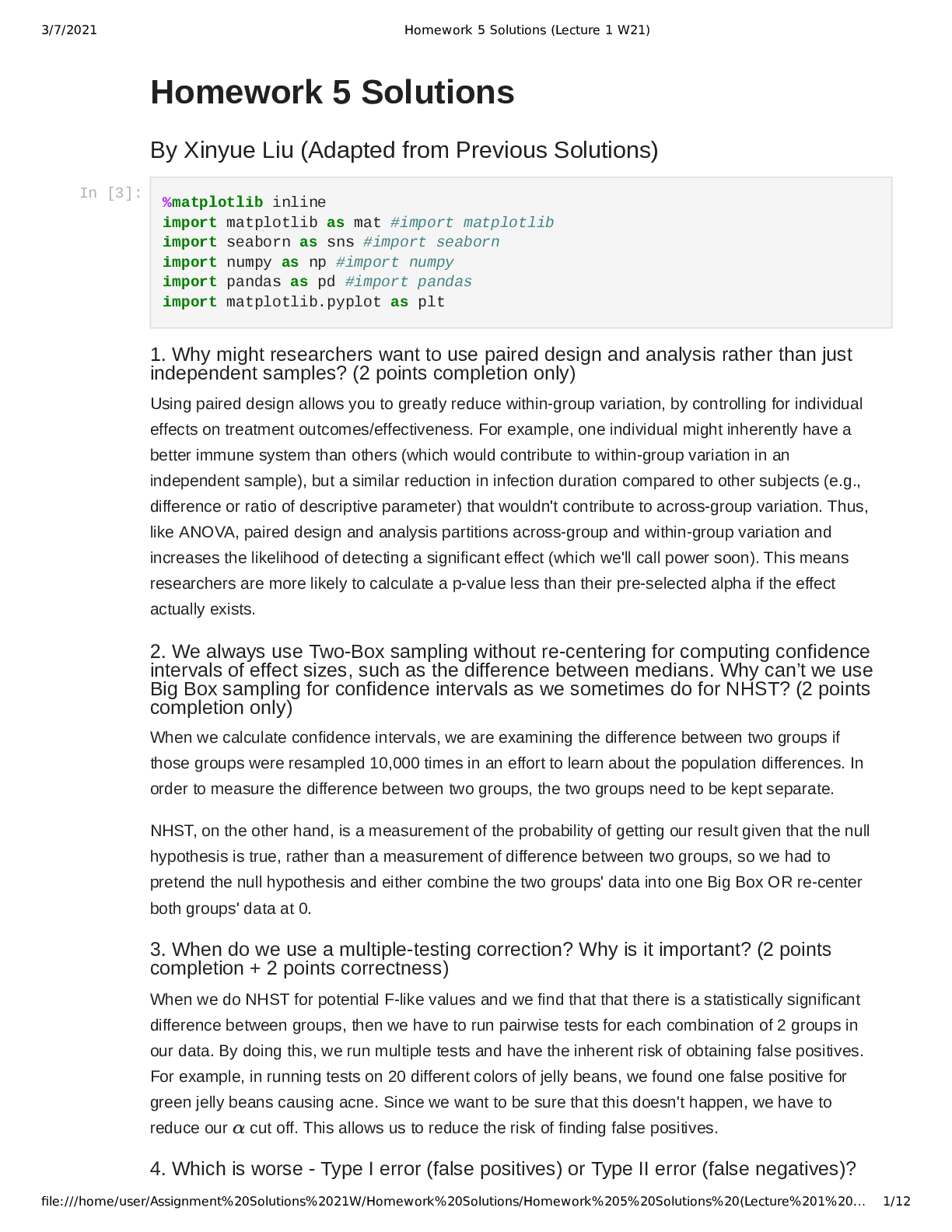
Buy this document to get the full access instantly
Instant Download Access after purchase
Add to cartInstant download
Reviews( 0 )
Document information
Connected school, study & course
About the document
Uploaded On
Jul 09, 2021
Number of pages
13
Written in
Additional information
This document has been written for:
Uploaded
Jul 09, 2021
Downloads
0
Views
36

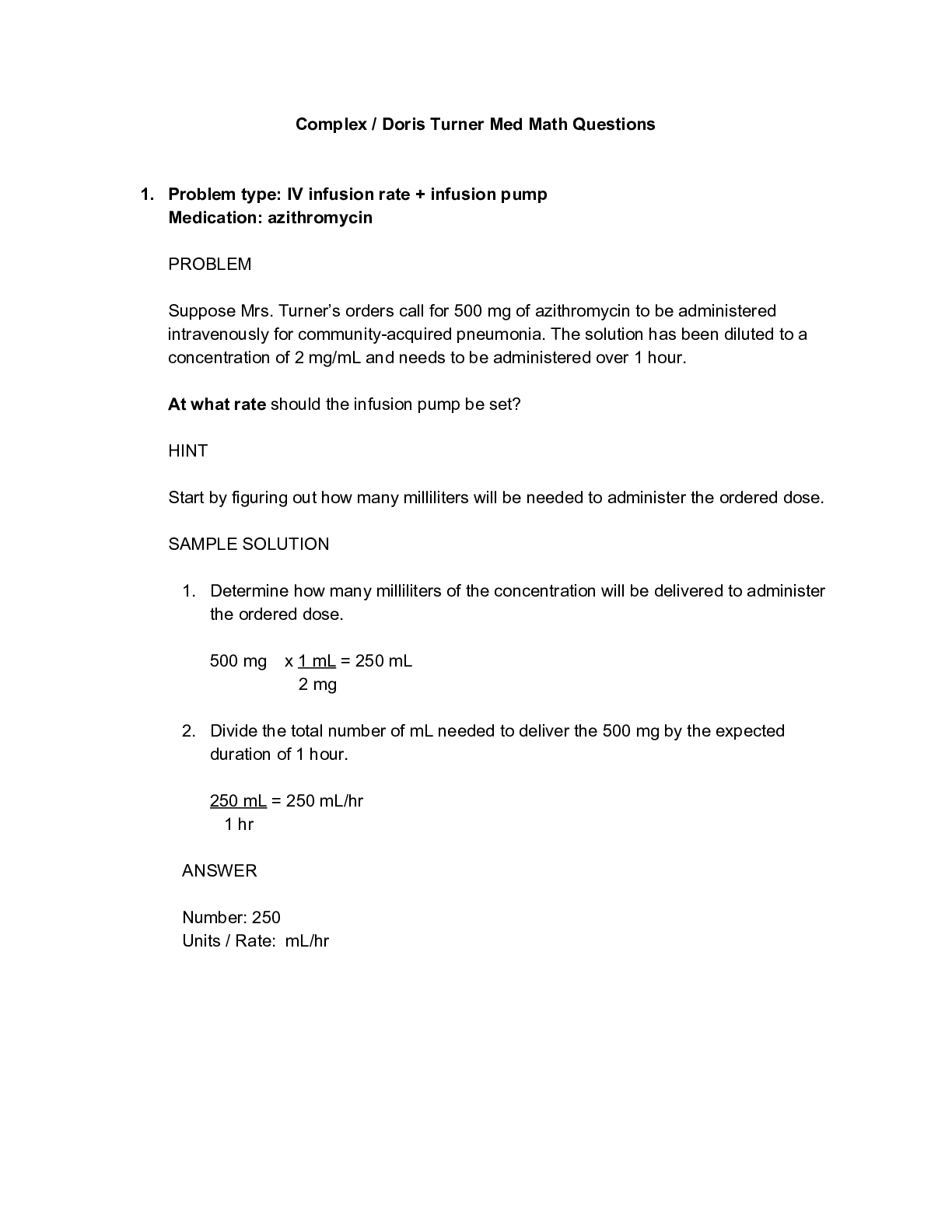





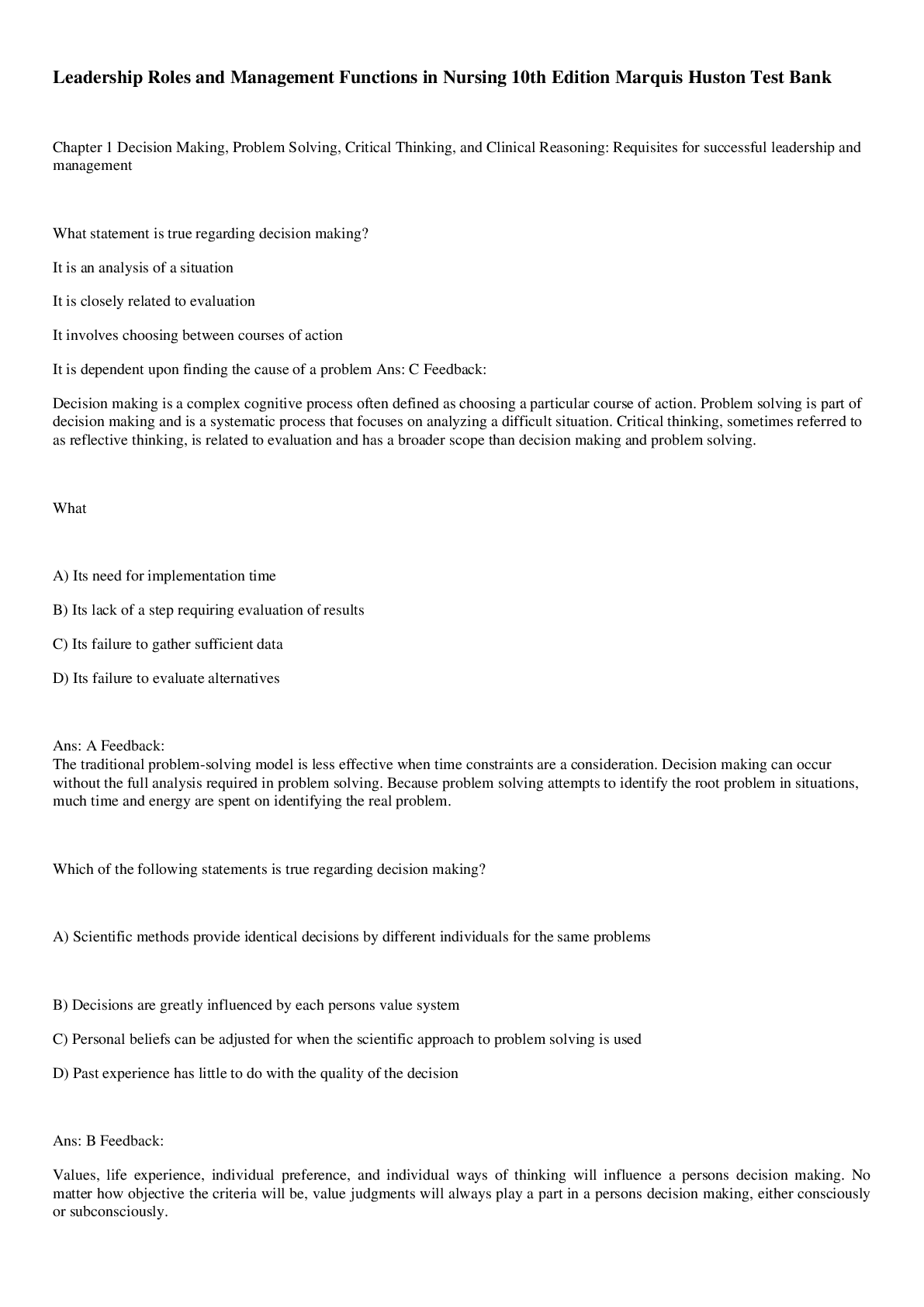


 (1).png)


